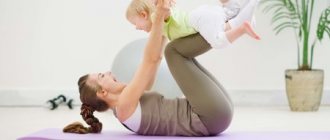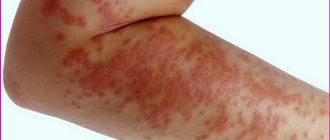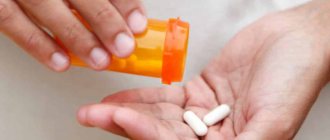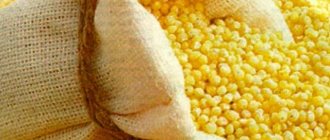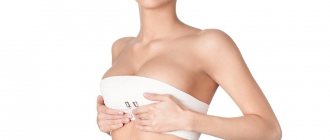Nine months of waiting filled with hope and love have passed. You are now beautifully called mom, and you will proudly bear his name for many years. There is a whole life ahead, many different moments: a feeling of joy and happiness, anxiety and grief that you will receive in the process of growth and development of your child.
But today we will not talk about children, but about young mothers who have successfully completed childbirth. The article is intended for those who want to know what needs to be done to restore the body. Serious changes have occurred and continue to occur in the body of a young mother, which bring new sensations and can cause unnecessary worries.
Postpartum manifestations are very similar for all mothers, so you can prepare in advance and not be confused when faced with them.
Postpartum period
A woman spends a huge amount of strength and energy during childbirth, but after a few hours the body begins the process of recovery and transformation.
The most critical period is considered to be the first 1.5-2 months after childbirth. Incoming milk increases the volume of the breast, restoration and changes occur in the reproductive system.
Postpartum lochia discharge (bloody vaginal discharge) lasts approximately 4-6 weeks In most cases, breastfeeding mothers do not have a menstrual cycle, and in mothers who do not breastfeed, menstruation will resume after the lochia stops.
Sexual activity should be resumed no earlier than 1-1.5 months, this is in the absence of birth injuries. If there are cracks and tears, you should wait for a complete recovery .
The woman’s body recovers gradually and physical activity should be increased in the same way. For the first four weeks, even homework will be a burden. In general, in the first 3 months of a child’s life, a mother should immerse herself in motherhood completely. This will give her a good mood and well-being, which will help revive her body faster.
If a caesarean section was used, recovery will take much longer. Therefore, it is necessary to follow the recommendations of your doctor, adhere to a diet and specific hygiene, and avoid any exercise.
After surgery, the postoperative period should be taken seriously. Resumption of sexual activity occurs only with the permission of the doctor, for which he needs to examine the woman in labor.
Restoration of the reproductive system organs
Pregnancy and childbirth have a significant impact on the condition of the uterus, its cervix, and vagina. The menstrual cycle is disrupted.
Uterus
Recovery of the uterus occurs after 6-8 weeks. All this time, the woman experiences specific bloody discharge - lochia. This is fine. In the first 2-3 days after birth, lochia resembles heavy menstruation. Over time, the discharge becomes less intense, its color (discharge becomes lighter) and consistency changes (mucous discharge and blood clots appear). Important! If the birth took place using a cesarean section, the period of uterine recovery and the duration of postpartum bleeding increases.
The recovery process is accompanied by contractions of the uterus, during which the woman may experience intense pain. This is also a normal condition. The uterus, contracting, returns to its normal state, its size and volume are restored. If immediately after birth the organ weighed about 1 kg, then after 1.5-2 months its weight is 60-80 g, the original pear-shaped shape returns (after the baby was born, the shape of the uterus was spherical). Contractions of the uterus are caused by the release of the hormone oxytocin into the blood, the production of which increases when the baby is applied to the breast. That is why during breastfeeding the process of restoration of the uterus occurs more intensively.
Many women experience a significant decrease in uterine tone after childbirth. This phenomenon can lead to very unfavorable consequences, such as uterine bleeding, stagnation of lochia with the subsequent development of the inflammatory process, and endometritis. The development of complications is accompanied by a change in the nature of postpartum discharge, its color, volume, and smell.
Cervix
This area of the reproductive system takes the longest to recover. And even after the rehabilitation period has expired, the cervix will not return to its original shape (therefore, during a gynecological examination, the doctor can easily determine whether a woman has given birth or not). This is typical only for natural childbirth. So, if before pregnancy the opening of the cervix was round, after childbirth it takes on a slit-like shape. The cervix itself becomes like a cylinder (before childbirth it had a cone shape). The duration of the rehabilitation period for the cervix is about 4 months; if there are complications during childbirth, this process can be extended.
Vagina
After pregnancy and childbirth, the tone of the vaginal muscles decreases (over time it increases, but will never be the same). How quickly will I recover after childbirth? To do this, it is recommended to regularly do Kegel exercises, which will not only bring muscle tissue to a normal state, but will also help avoid such unpleasant manifestations of hypotonicity, such as urinary incontinence, which is observed in many women in labor.
In addition, a woman experiences vaginal dryness, which occurs as a result of increased secretion of prolactin (breastfeeding hormone, against the background of a decrease in the level of sex hormones - estrogen and progesterone). Over time, hormonal levels return to normal. This finally happens when breastfeeding ends.
Menstrual cycle
A signal that the process of postpartum rehabilitation is completed is the normalization of the menstrual cycle. Usually the cycle is restored after 7-8 months , however, the appearance of normal periods may occur later. How long the cycle normalization process will last depends on the presence or absence of some unfavorable factors, such as:
- general weakness of the body;
- pathological course of pregnancy and childbirth;
- the presence of diseases in a chronic form;
- poor nutrition;
- physical and emotional fatigue;
- age (the older the woman in labor, the longer the period required for her body to recover).
Where to start recovery after childbirth
Nutrition is one of the most important factors for resuming normal functioning of the body. The diet should consist of foods that contain minerals, especially calcium and vitamins. After childbirth, microelements will be needed in large quantities to restore the body.
Don’t forget about natural fortified teas that can improve tone, strengthen the immune system, and prevent infectious and viral diseases. You can safely use rose hips and raspberry leaves. If constipation is present, add dried apricots to your diet, several fruits a day. They will help empty the intestines.
Healthy food provides strength and mood. In addition, it stabilizes weight and restores the mother’s figure. In most cases, are overweight , so nutritionists recommend nutritious but low-calorie foods.
It is necessary to remove confectionery products from the diet, limit bakery products and completely eliminate sausages. Switch to eating dietary meat, fruits and vegetables, and dairy products. Increase the number of meals to 5-7 per day in small portions.
In addition to reducing the number of calories consumed, you should increase their consumption, that is, add physical activity. Remember, you don’t start doing gymnastics immediately after returning home from the maternity hospital, but after about a month, and not all exercises are performed. Before you start loading the press, you need to wait 1.5-2 months.
Regular gymnastics will help you get your body back much faster. You need to allocate about half an hour every day for this. Swimming will greatly help you improve your health and strengthen your muscles, and dancing will restore your figure; even a regular walk with a stroller, carried out at a fast pace , will help strengthen the cardiovascular system .
Metabolism plays an important role in restoring the functionality of the female body as a whole. For its normal functioning, nutrition, exercise and healthy sleep are also necessary.
Doctors recommend that mothers sleep when they want and do not deny themselves if possible. The little one is tired and fell asleep, lie down next to him, rest, and let the whole world wait. You’ll have time to clear the dishes and table later, but you rarely get a good night’s sleep and won’t get a chance for the next few months.
Of course, you shouldn’t forget about various personal body care products. An additional contribution will be made by massage or self-massage, during which you can use moisturizing and anti-cellulite products. To restore the shape , beauty and elasticity of the skin, peeling is often used.
Problem #5 – hyperpigmentation
Another problem, more than half of young mothers after childbirth are age spots on the face. During pregnancy, the hormonal system of a woman’s body changes significantly, which contributes to the formation of this type of change. Age spots are not dangerous, but due to their location (usually the face) they can be disfiguring.
Laser is considered the most effective, stable and safe method of removing age spots. Its action is based on the release of a light wave with a correspondingly selected length, the energy of which is absorbed into discolored areas of the skin. Thus, it warms them and damages them. This produces melanocytes, which are then excreted from the body. In the first days after the procedure, the color becomes darker, and after about two weeks the stain disappears forever. During pregnancy, the most severe types of spots usually occur, followed by chloasma.
For such extensive and difficult to treat cases, the copper bromide laser is recommended. The advantages of the bromide laser are that it delivers two wavelengths per pulse, whereas traditional lasers produce a single beam length. In terms of efficiency, the copper bromide laser is years ahead of other solutions.
Postpartum breast reconstruction
Breasts are exactly what young women are trying to preserve. Carrying a child and giving birth changes the shape of the breasts, every mother is aware of this. You need to prepare for this in advance, and start taking preventive measures long before giving birth.
It is not at all difficult to choose a bra so that it is comfortable, maintain correct posture and strengthen the pectoral muscles with simple exercises. By the way, these preventive measures are also relevant in the postpartum period. They help strengthen and maintain chest muscles. During this period of time you should add:
- cold and hot shower;
- breast massage;
- hydromassage;
- special creams and cosmetic oils intended for breast care.
Thanks to the contrast shower, blood circulation increases, and accordingly, the blood flow in the chest muscles increases. If possible, use hydromassage; the duration of the massage for each breast is 5-7 minutes. It is important to monitor the water temperature; it should be as comfortable as possible. After completing the procedures , it is recommended to moisturize the skin on the chest with natural oils. Combining a shower and hydromassage has a positive effect on the condition of the pectoral muscles.
During breastfeeding, the use of factory-made cosmetics is strictly contraindicated, but the use of natural and home-made products is allowed.
For breast massage, use a mixture of olive and almond oil with the addition of ground wheat sprouts. Massage should be performed two to three times a week . This composition will help quickly restore breast elasticity, add moisture to the skin, and remove postpartum stretch marks.
Of course, you should always remember about proper nutrition and exercise. Your daily plan should be drawn up in such a way that you always have time for yourself. It is advisable to carry out exercises to strengthen the chest muscles every day, this is the only way to return the desired breast shape the fastest.
Problem No. 2 – loose skin after childbirth
It is worth knowing that RF microneedles also cause skin tension, which means that, to some extent, they allow you to remove abdominal sagging after childbirth. This is an ideal solution for women with stretch marks and excess skin on the abdomen, because two aesthetic problems can be improved in one type of treatment.
However, if the skin in this area is very stretched, then this type of procedure is not enough and surgical intervention will be necessary. You also can't forget about the muscles in your abdomen, which tend to be misshapen after childbirth. To improve their condition, it is worth undergoing electrical stimulation or massage using vacuum. A good example would be endermology, where the main task is body modeling.
Restoration of intimate muscles
The vagina undergoes several changes not only during childbirth, but also during pregnancy.
Changes occur as the fetus increases in size. The fetus enlarges, expands the uterus and presses its weight on the vagina, stretching the walls. Then, at birth, the child passes through the birth canal and stretches the vaginal walls very significantly, often accompanied by cracks and tears in the tissue.
The amazing female body begins restoration actions already in the first hours after the baby is born. Even without outside intervention, he is able to return the previous sizes of organs quickly enough, but not immediately. At first, the process of resizing may be accompanied by excessive dryness, which causes some inconvenience to the woman.
To restore the vaginal muscles, many mothers resort to special A. Kegel exercises, which contribute to the development and strengthening of the perineal muscles. He came up with a few simple exercises a hundred years ago, and they are still relevant. You can use special devices that are sold in intimate stores, such as vaginal balls and jade eggs.
More advanced mothers begin to perform the Kegel complex long before giving birth. This preparation of the muscles of the vagina and groin guarantees the passage of the baby with minimal damage to the birth canal. But after childbirth, the value of these exercises is no less.
Quite simple exercises are aimed at tensing and relaxing the groin muscles. This makes it possible to strengthen the walls and muscles of the vagina, perineum and bladder.
Problem #1 – stretch marks
In the treatment of stretch marks after childbirth, the principle is simple - it is better to respond to new strips as early as possible. You can work on fresh stretch marks as early as the sixth week after giving birth. According to Dr. Mark Wasyliuk from the Triclinium Clinic in Warsaw, the best methods to solve this problem are fractional laser, fractional microneedling and copper bromide laser.
Laser light, penetrating deep into the skin, stimulates reparative processes that cause the formation of new collagen and the treatment of fresh stretch marks. Laser treatment is safe and does not require long-term healing. Since stretch marks are defects in the deep layers of the skin, and the fractional laser penetrates only to a depth of 1.5 millimeters, sometimes its effect may be insufficient.
Fortunately, there is another, completely new technique - fractional microneedling. This procedure consists of simultaneous tingling and heating of the skin with a head equipped with 25 microneedles, allowing them to penetrate very deeply into the skin, up to 3.5 millimeters. This heating strongly stimulates fibroblasts to produce new elastin and collagen. The fibers are twisted and compacted, and new connections also arise between them. Thus, deeply located striae begin to fill in again and eventually disappear. And the copper bromide laser effectively eliminates the bluish color within fresh stretch marks.
These methods will help you effectively recover after childbirth and eliminate stretch marks without harm to the baby.
Menstrual cycle
Young mothers believe that the main thing is the restoration of menstruation after the baby, so they look forward to their appearance. Over a long period of their absence, the mother gets used to this, and after giving birth she begins to expect their appearance, showing concern.
When breastfeeding a child, you can safely expect the resumption of cycles for several months. Lactation is considered the most reliable method of birth control; in the absence of a cycle, it is impossible to get pregnant. But in fairness, it is worth noting that this is true only in the case of regular feeding of the baby, without skipping even at night. Although you should remain alert and careful, it is impossible to determine when your periods may return. There is always a chance to get pregnant in the first cycle.
If there is no milk or some other reason does not allow the mother to breastfeed, the resumption of menstruation should be expected approximately 1.5-2 months after birth. With a mixed diet, the menstrual cycle is expected after 4 months or 4-6 weeks after switching to a mixed diet.
Interesting fact: most women whose monthly cycle before childbirth was accompanied by pain syndrome forget about it after the birth of the child, menstruation is painless. And the duration of the cycle often changes. Typically, the cycle lasts from 21 to 34 days, and after childbirth the interval averages out and is 25-28 days.
It is worth paying attention to the duration of the discharge. The average normal cycle lasts three to five days. Discharge that ends on the second day or lasts a whole week should be a reason to visit a specialist. You should also be wary of a very small or large amount of discharge, light spotting before the cycle or immediately after the end.
How long does it take for the body to recover after childbirth? There is no specific period after which the normal course of the menstrual cycle will definitely return after the birth of the child. Each individual case occurs individually and depends on many factors, for example:
- mother's age;
- health status before childbirth;
- pregnancy, with or without complications;
- how the birth went;
- nutrition also plays a role;
- daily regime;
- daily normal rest and sleep;
- psychophysical state of the woman;
- emotional state, etc.
Restoring general tone
To restore the body, a balanced diet is of great importance. The diet of nursing mothers involves not only food restrictions, but also the intake of vitamin complexes. During lactation, you can continue to take prenatal vitamins - they contain all the necessary nutritional elements. Another option is to purchase special vitamins for nursing mothers. Do not forget about iron and iodine supplements. Many complex vitamins already contain these substances, so there is no need to take them additionally.
Advice
Take vitamins daily for a year after your baby is born.
In the summer, you can get vitamins from fresh vegetables and fruits. You should give preference to local products grown in your own garden or purchased at the market. Nursing mothers should be especially careful with exotic fruits - they can cause an allergic reaction in the child.
Helpful: Early detection of asymptomatic tuberculosis will show the Mantoux reaction
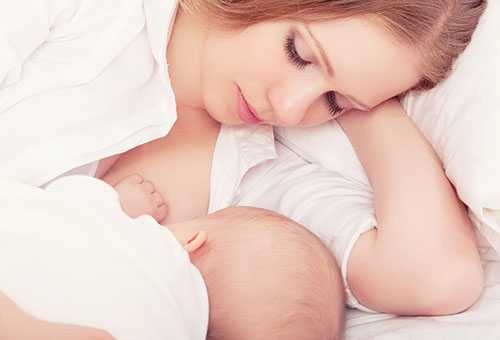
Final conclusions
There is also such a thing as postpartum depression, it really exists, it’s just expressed differently:
- through physical ailments;
- or bad mood;
- visible anxiety, fear or causeless anxiety;
- constant desire to lie down to rest or sleep.
There is no need to be scared, this is all completely normal. This postpartum period can be easily removed even on your own at home .
- Dads, do not leave the woman in labor alone and be sure to support her morally. Friends, girlfriends or relatives - those who have already experienced such stress understand perfectly the feelings of a young mother.
- Moms, do not hesitate to ask your loved ones for help. If you are very tired, you need to rest; take some free time for yourself and for rest. Most women in labor develop their depression on their own, accumulating everyday fatigue.
From the first day of returning home from the maternity hospital, every minute of the young mother is occupied: baby, cleaning, washing, ironing, dinner, husband, etc. Nothing will happen if the husband prepares dinner on his own, and the mother or one of her girlfriends takes out the stroller for an hour's walk. Even if the dishes sit unwashed until dinner, everything will be fine, the main thing is to find time to:
- sleep an extra hour;
- lie in the bath;
- get a manicure;
- go to the hairdresser, etc.
Anything, as long as the feeling of femininity remains. A nursing mother needs rest, like any other person.
In this case, you can guarantee the absence of depression and bad mood. Your husband will never leave you without attention, and your child will be healthy and happy.
Figure restoration
During the entire pregnancy, a woman gains approximately 10-12 kg of weight
, which includes the weight of the fetus, amniotic fluid and membranes, and the weight of the increased blood volume. Almost all of this weight goes away after the baby is born. However, changes in diet and decreased physical activity of a pregnant woman lead to visible changes in her figure.
For a faster recovery, a woman is recommended to:
It seems like just yesterday you were walking around with your baby bump, catching your baby’s every move and eagerly awaiting the baby’s arrival into the world. And here it is, the long-awaited meeting! Now you are a mother, and taking care of your child is the most important thing for you.
But very often a new mother, busy with the baby, cooking and cleaning, forgets about her own health. Weakness, fatigue, pain, depression - the woman tries not to pay attention to all this. But in vain.
Only a healthy and happy mother can raise a healthy and strong baby. How to recover after childbirth, put yourself and your thoughts in order - we will tell you in this article.
Pregnancy and childbirth are a serious burden on a woman’s body. Recovery may take a long time. But maintaining good health after the birth of a child is not so difficult. Here are some tips on how to regain your health after childbirth.
Sleep and rest are not only about restoring physical strength, but also about preserving the health of the young mother. The mood and behavior of the baby depends on how the woman feels. It should not be surprising that the exhausted and nervous state of the mother often becomes the cause of anxiety for the newborn.
Due to lack of sleep, a woman's lactation may decrease. Against the background of exhaustion of the nervous system, the amount of prolactin, the hormone responsible for the production of breast milk, decreases. Therefore, mom simply needs healthy sleep and rest.
The baby requires attention, and you also need to redo household chores: cook, wash, clean... Often a new mother strives to do everything at once - the wounds have not yet healed, but she is already standing at the stove or washing the floor.
To recover faster after childbirth, learn to prioritize.
Divide tasks into necessary and non-essential ones, put them off or reschedule them for another day if you don’t feel well. Do not hesitate to ask your husband and family for help.
After childbirth, a woman’s body gradually begins to return to its “pre-pregnancy” state. After all, in 9 months the woman’s body has changed: the internal organs have changed their position, the load on the joints has increased, and her posture has become disturbed.
The body's reproductive system gradually begins to recover. During the gestation period, a woman's uterus increases from 50 grams to 1.5 kilograms. The recovery process is accompanied by bloody discharge from the genital tract, called lochia.
Lochia is a physiological postpartum discharge from the uterus. They consist of blood, mucus and non-viable tissue. Lochia is very similar to menstrual flow; normally it lasts from 1.5 weeks to 1.5 months after birth.
To avoid the development of infectious diseases, a young mother must follow the rules of intimate hygiene.
- Wash yourself after every visit to the toilet. Use hypoallergenic liquid soap - a suitable cosmetic product for children.
- After childbirth, use only special gynecological (also called postpartum) pads. Change them every 3-4 hours. Use unscented sanitary pads at home.
- Treat sutures on the perineum (if any) with antiseptics and, as they dry, with anti-inflammatory agents that accelerate healing. Before the procedure, do not forget to consult a gynecologist.
Breast care (especially during breastfeeding) is important for the restoration of the entire female body. Mom should know that breast restoration after childbirth is directly related to lactation. A woman who feeds her child with milk until she is one to one and a half years old will quickly return her breasts to good shape.
How to care for the mammary glands to avoid complications?
- To stimulate blood circulation in the mammary glands, take a contrast shower. Use a separate towel for your breasts.
- After water procedures, apply cream to the nipple and areola to prevent the formation of cracks. Please note that some products need to be washed off before feeding.
- Massage your breasts to avoid lumps and stagnation of milk.
- Express breast milk if necessary.
To recover faster after childbirth, a woman also needs to review her diet. This is especially true for those who feed their baby breast milk. Both lactation and well-being, metabolism, and the functioning of the internal organs of a young mother depend on proper nutrition. And, of course, her appearance.
A strict diet is prohibited. To get rid of extra pounds, a woman who has recently given birth should adhere to the following principles. The weight, although slowly but steadily, will go away.
- Eat at least five times a day, but in small portions.
Break up your main meals with snacks – fruit, yogurt or kefir. - Eat low-calorie foods.
Both mother and baby need vitamins, proteins and “slow” carbohydrates. They are found in vegetables and fruits, cereals, soups and lean meats. The healthiest dishes are steamed or boiled... - More water.
Water will also help you recover after childbirth. Various liquids - compotes, diluted juices, tea with milk - are needed by a young mother to produce breast milk. Water helps speed up metabolism and burn excess fat.


